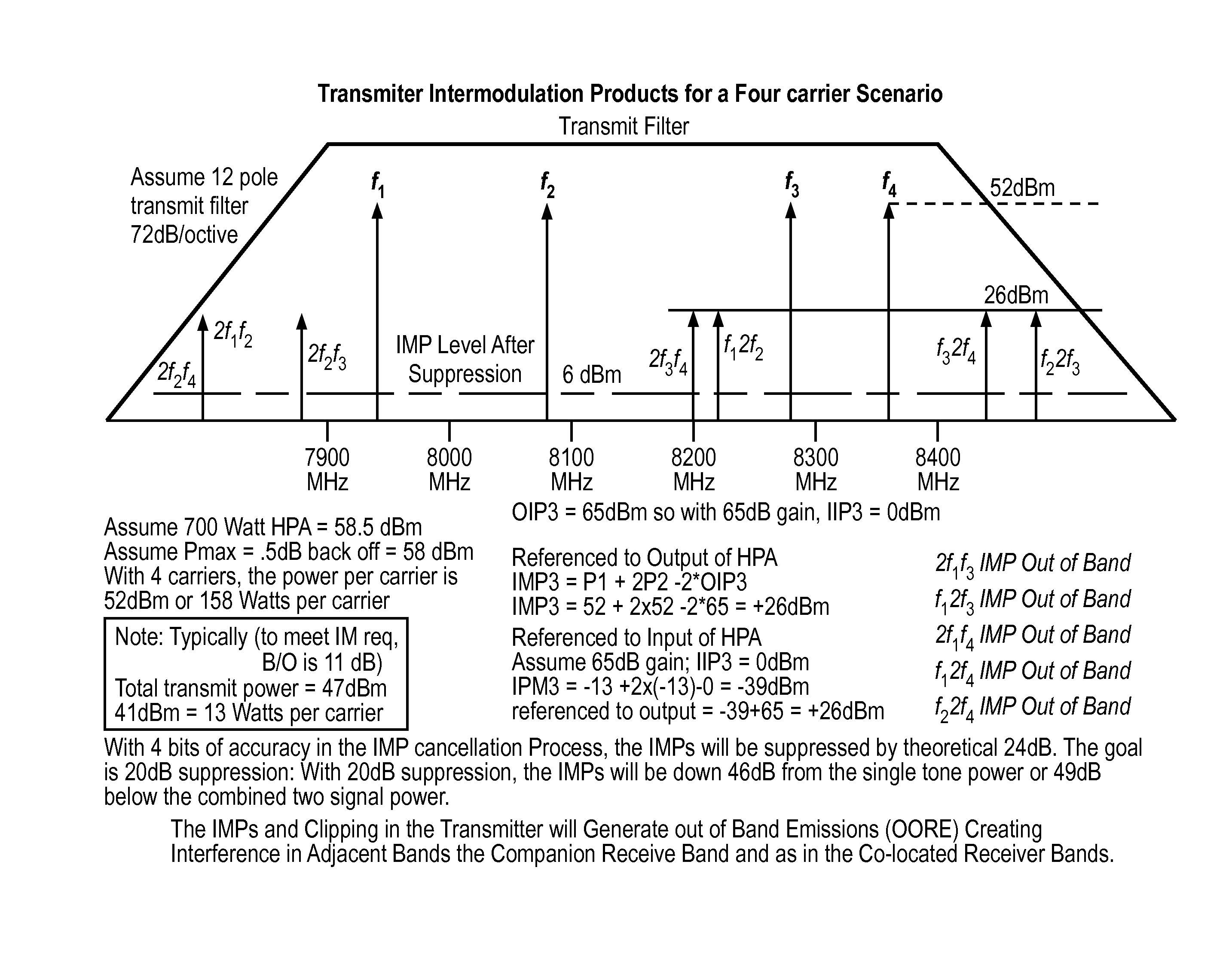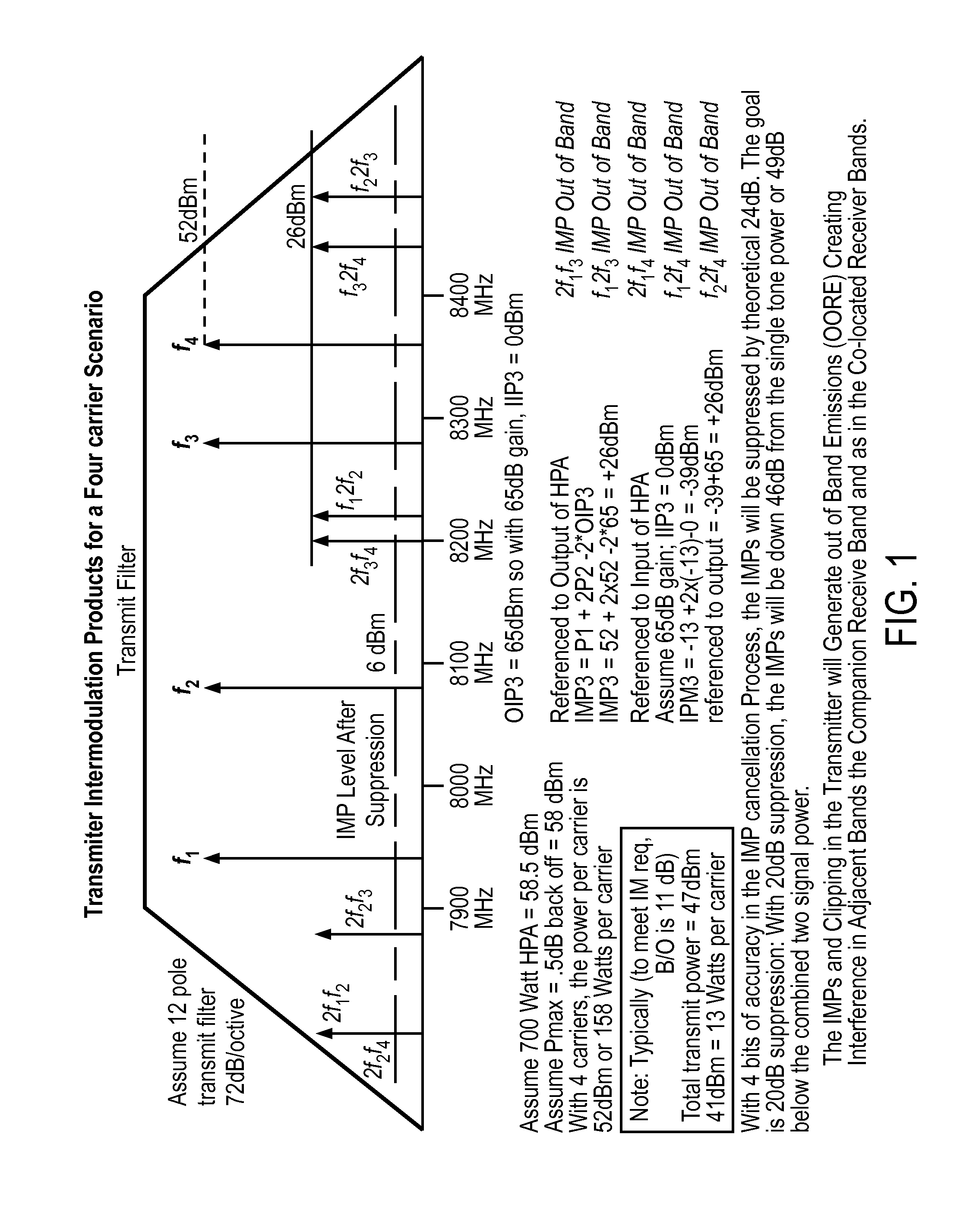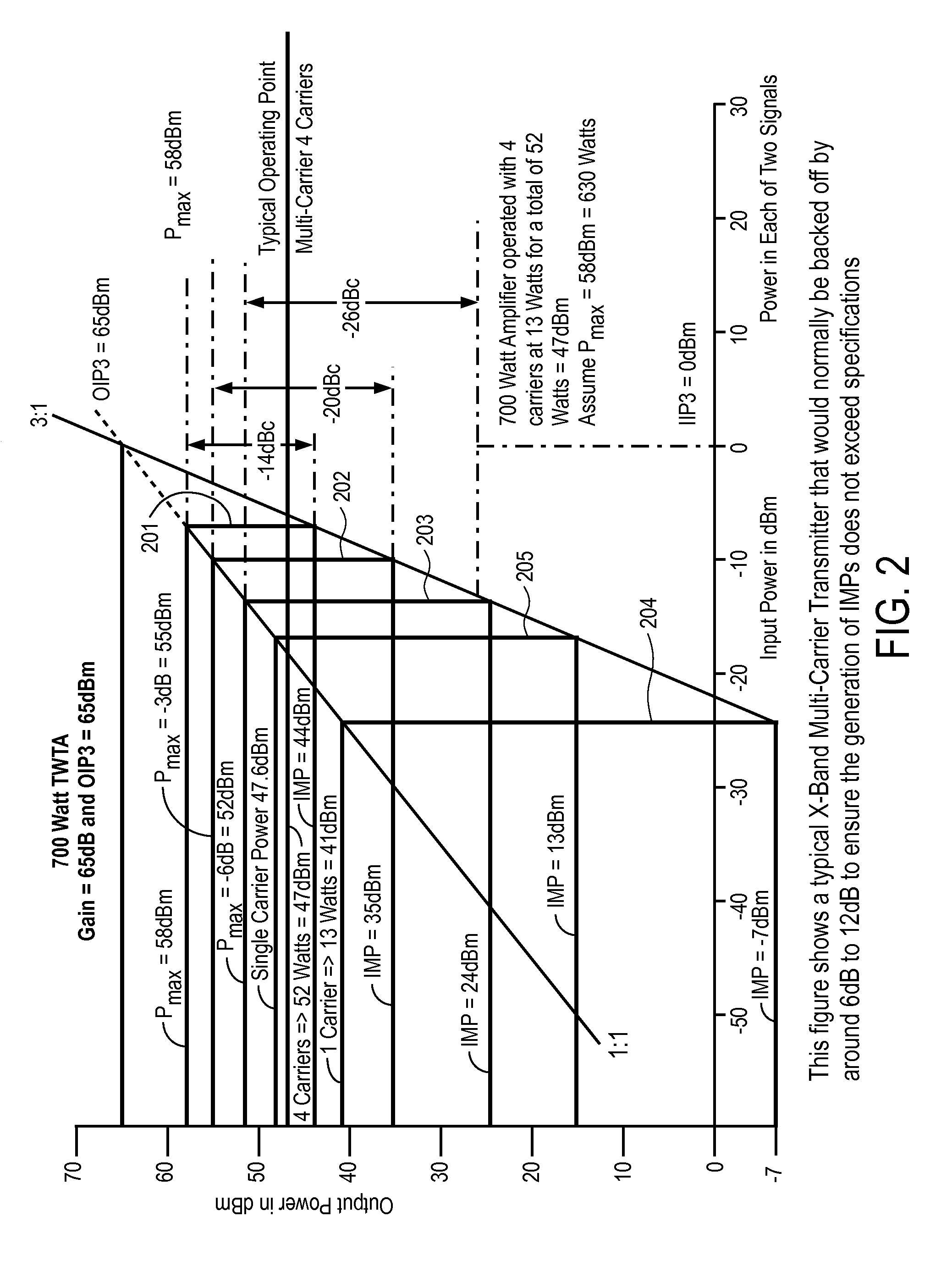Mitigation of transmitter passive and active intermodulation products in real and continuous time in the transmitter and co-located receiver
a passive and active intermodulation and transmitter technology, applied in the field of nonlinear transmitters and radio receivers, can solve problems such as unsatisfactory mitigation of the effect of the interference problem
- Summary
- Abstract
- Description
- Claims
- Application Information
AI Technical Summary
Problems solved by technology
Method used
Image
Examples
example imp scenario
[0134]For this example, the gain is assumed to be 65 dB and the OIP3 is 65 dBm so the IIP3 is 0 dBm.
[0135]In this example, we assume 4 carriers with an output power of 13 watts each for a total of 52 watts or 47 dBm from a maximum power output of 700 watts (58.5 dBm) and a Pmax of 58 dBm. (Note: This amplifier would most likely require phase coherent power combining of two or more TWTAs). In this case, the OSP1 and OSP2 would be at 13 watts or 41 dBm, or an input of −24 dBm (ISP). The output IMP would be:[0136]OIMP3=3(41)−2(65)=−7 dBm referenced to the HPA output
[0137]If referenced to the amplifier input,[0138]IIMP3=3(−24)−2(0)=−72 dBm=>−72 dBm+65 dB gain=−7 dBm=OIMP3:[0139]See FIG. 2, 204
Maximum Linear Power as Defined by MIL-STD-188 / 165A
[0140]If we ignore the multiple IMPs and just use the definition of a single IMP level below the single carrier, then the maximum linear power is defined as the power at which each of the IMPs is −25 dBc. In the case shown in FIG. 2, without IMP su...
PUM
 Login to View More
Login to View More Abstract
Description
Claims
Application Information
 Login to View More
Login to View More - R&D
- Intellectual Property
- Life Sciences
- Materials
- Tech Scout
- Unparalleled Data Quality
- Higher Quality Content
- 60% Fewer Hallucinations
Browse by: Latest US Patents, China's latest patents, Technical Efficacy Thesaurus, Application Domain, Technology Topic, Popular Technical Reports.
© 2025 PatSnap. All rights reserved.Legal|Privacy policy|Modern Slavery Act Transparency Statement|Sitemap|About US| Contact US: help@patsnap.com



